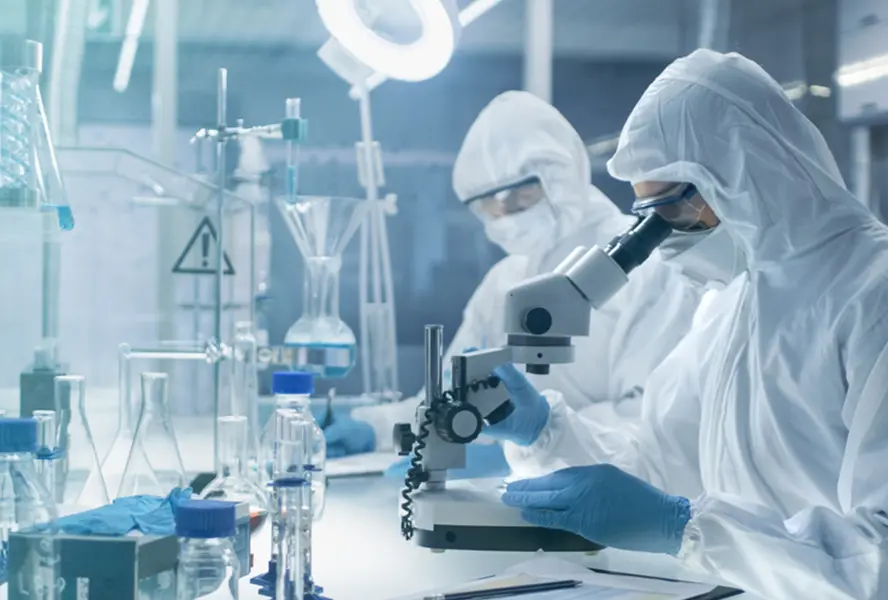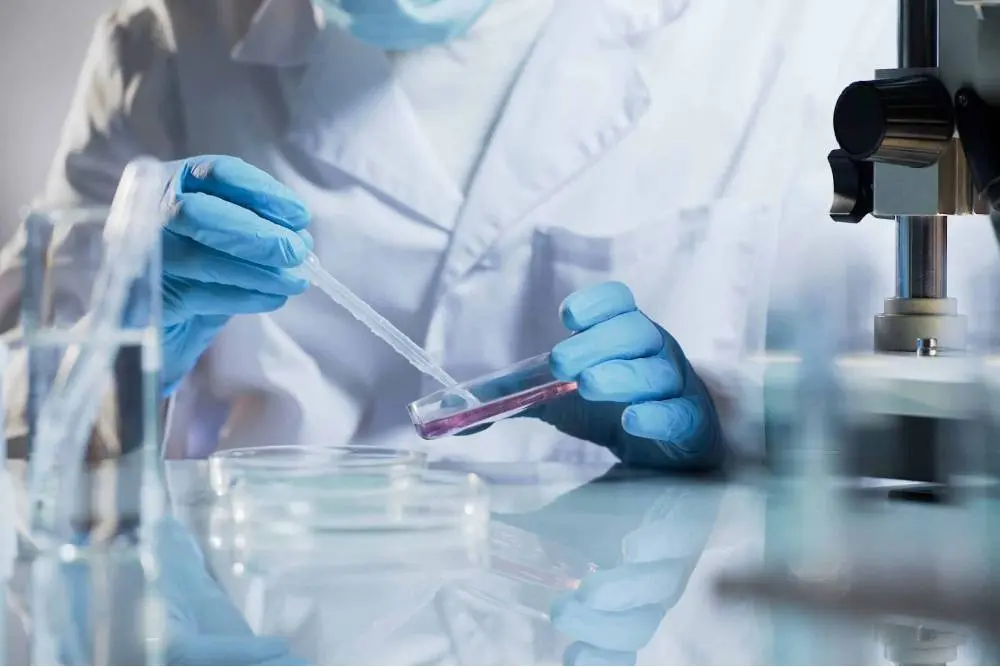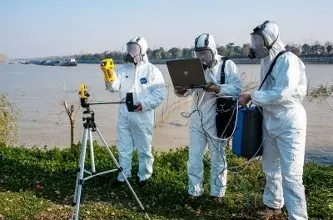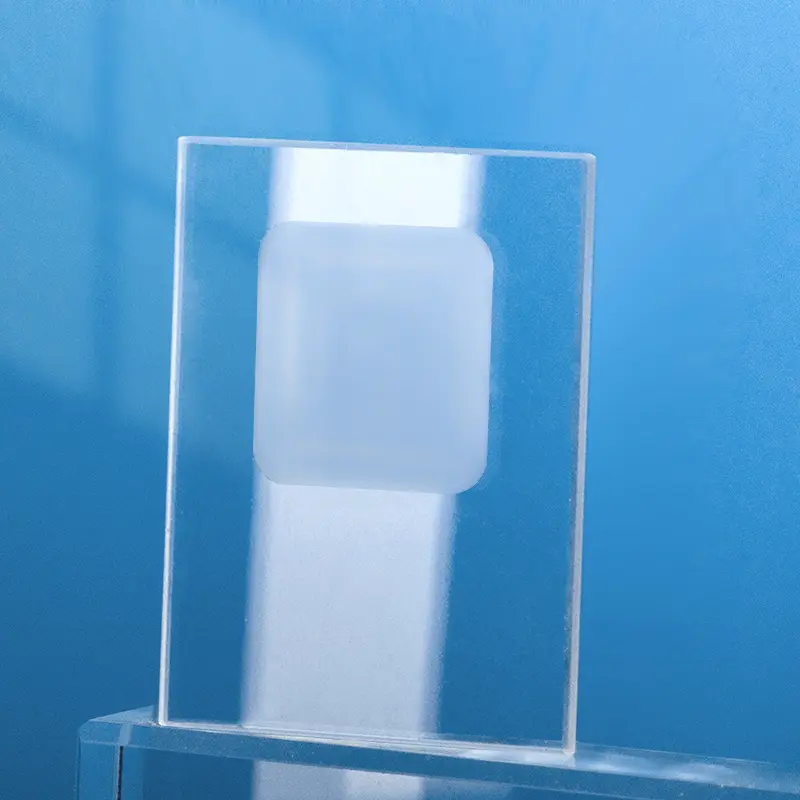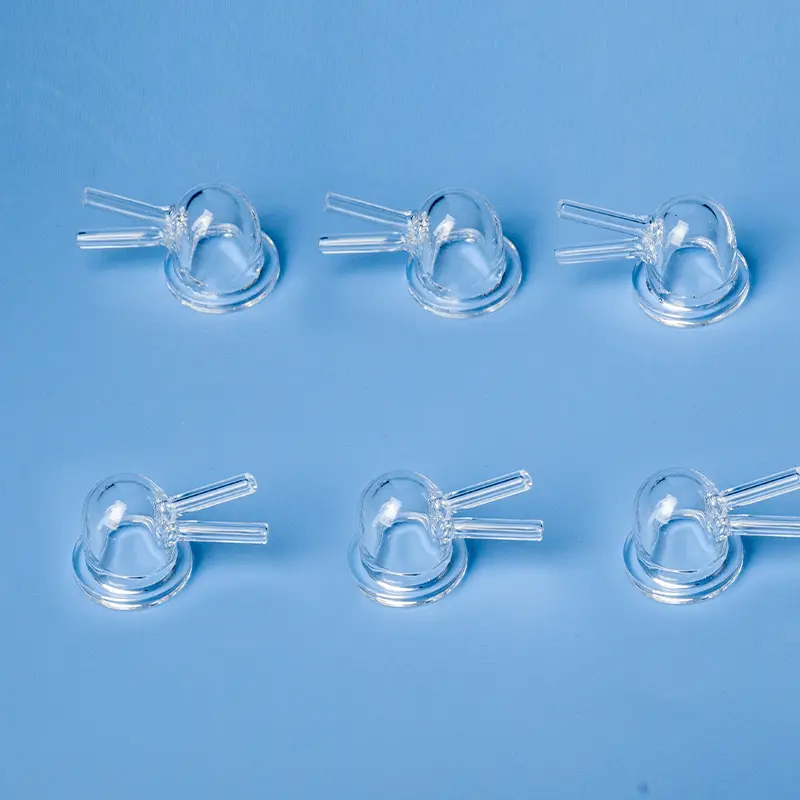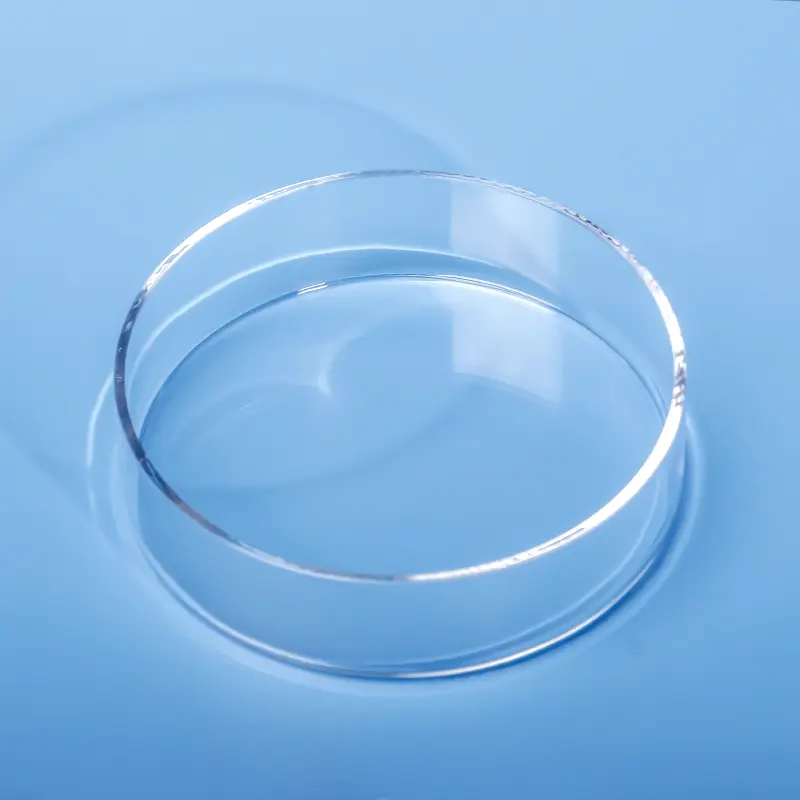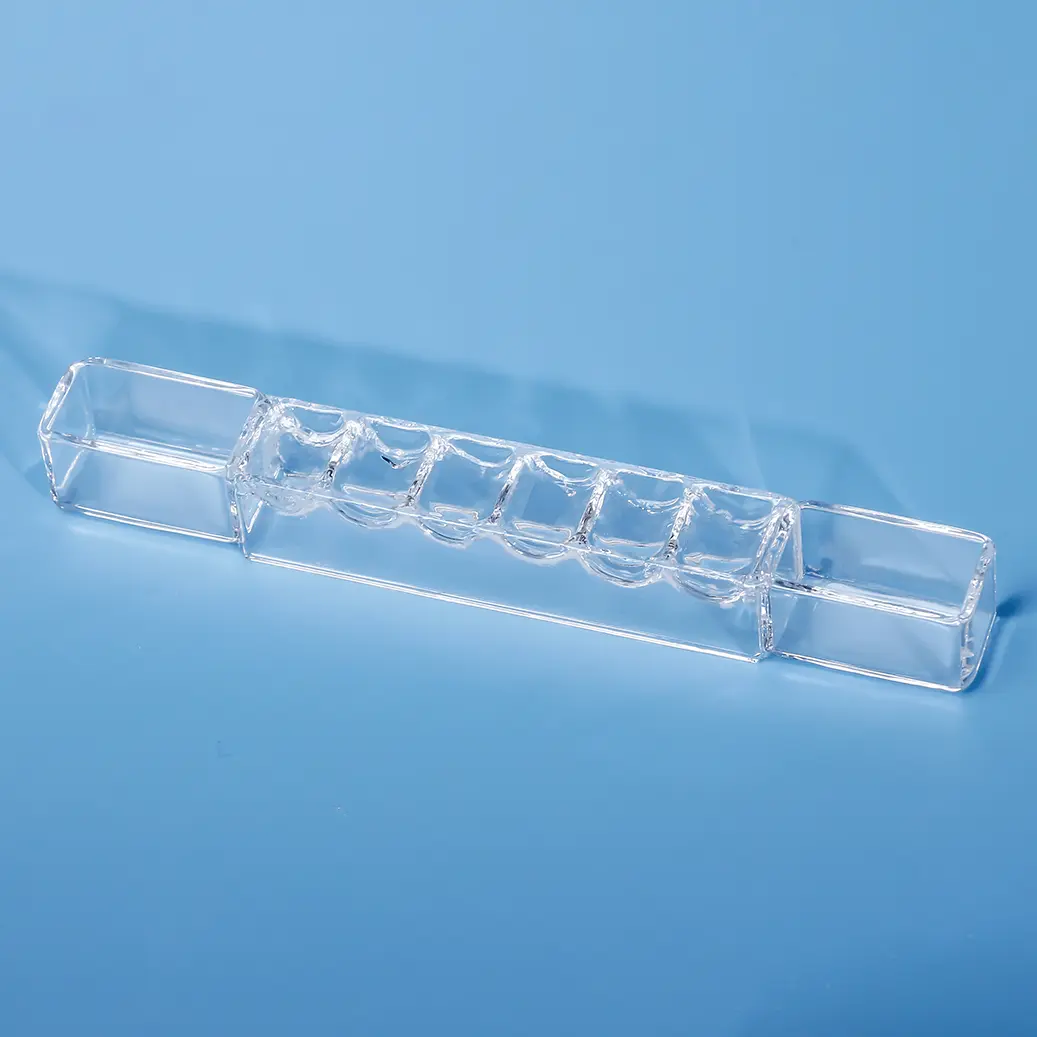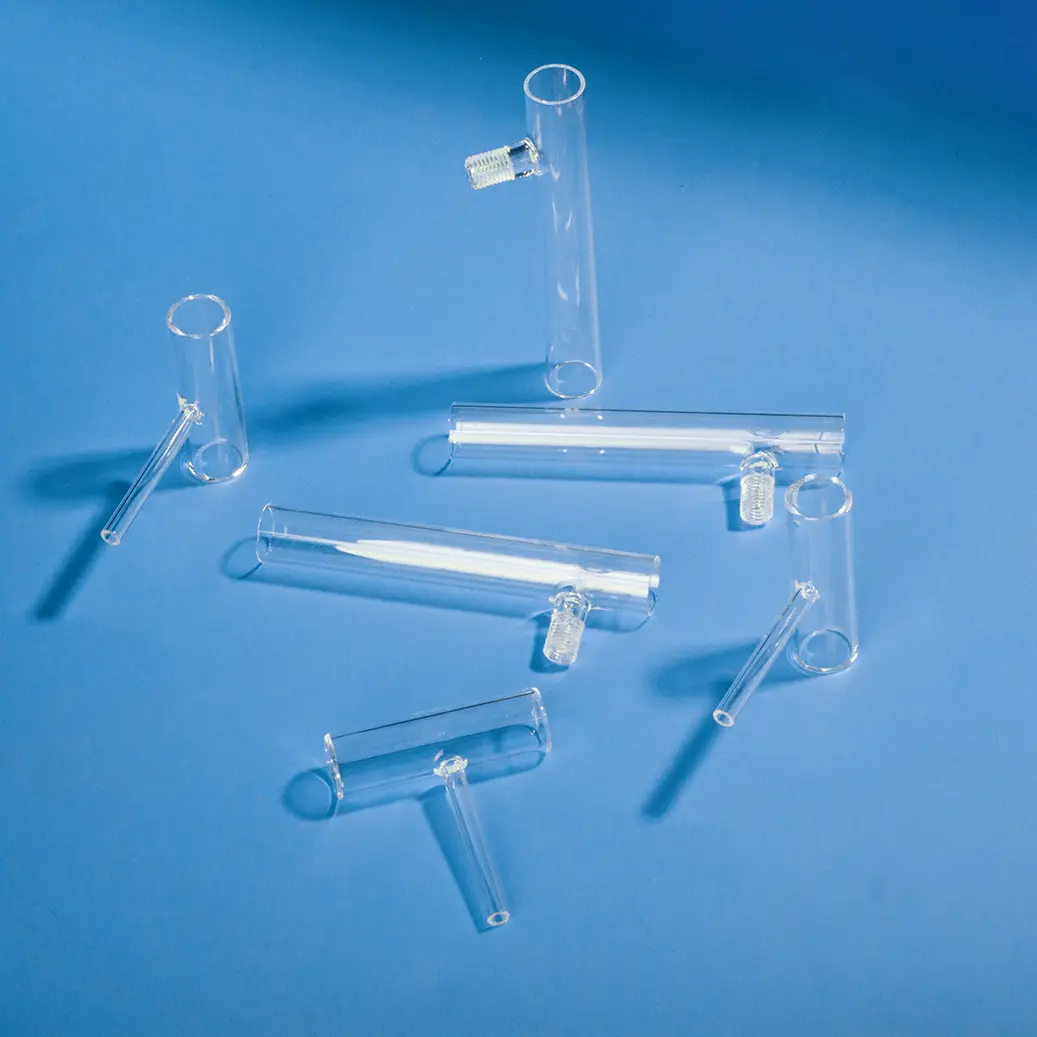Quartz cylindrical cuvettes are laboratory vessels made from ultraviolet fused silica glass, characterized by high light transmittance, excellent chemical resistance, and superior optical properties. They are suitable for spectroscopic analysis in both the ultraviolet and visible light regions. They are widely used in various industries, such as chemical, medical, and environmental fields, for the quantitative and qualitative analysis of substances, particularly for measuring substances that absorb in the ultraviolet light region.
| 物件内容 | 資産価値 |
|---|---|
| 二酸化ケイ素 | 99.99% |
| 密度 | 2.2×10³ kg/cm³ |
| 硬度 | 5.5 - 6.5 モース硬度 570 KHN 100 |
| 引張強度 | 4.8×10⁷ Pa (N/mm2) (7000 psi) |
| 圧縮強度 | >1.1×10⁹Pa (160,000 psi) |
| 熱膨張係数 | 5.5×10-⁷cm/cm-°C (20°C-320°C) |
| 熱伝導率 | 1.4 W/m-°C |
| 比熱 | 670 J/kg-°C |
| 軟化点 | 1730度C(3146度F) |
| アニーリングポイント | 1210度C(2210度F) |
| ストレイン・ポイント | 1120度C(2048度F) |
| 作業温度 | 1200°C |
| 電気抵抗率 | 7×10⁷Ωcm (350°C) |
| サイズ | カスタマイズ |
| ロゴ | カスタマイズされたロゴ |
High Light Transmittance
Quartz cuvettes have extremely high light transmittance in the ultraviolet to visible light regions, particularly in the ultraviolet region. This is essential for experiments that require precise measurements within this wavelength range.
Excellent Chemical Resistance
The quartz material is resistant to strong acids, bases, and organic solvents, ensuring the stability and durability of the cuvettes in a variety of chemical environments.
Precise Optical Properties
The optical surfaces of quartz cuvettes are precision-machined to ensure accuracy and repeatability in spectroscopic analysis.
Wide Applicability
These cuvettes are compatible with various spectroscopic instruments, such as spectrophotometers, and can be used for quantitative and qualitative analysis of substances in both the 200-400nm ultraviolet range and the visible light region.
アプリケーション・シナリオ
The high light transmittance of quartz cylindrical cuvettes in the ultraviolet region is essential for experiments requiring precise measurements in this wavelength range. Many biomolecules and chemical substances have characteristic absorptions in the ultraviolet region, which are crucial for their quantitative analysis and identification.
When using quartz cuvettes, avoid touching the optical surfaces to prevent contamination. Thoroughly clean and properly store them before and after use to maintain their performance. Also, because quartz material is fragile, handle with care to prevent damage.
When cleaning quartz cuvettes, gently wipe with a mild detergent and a soft cloth, avoiding hard brushes or abrasives that could scratch the surface. After cleaning, thoroughly rinse and air-dry or wipe with a lint-free cloth. For long-term storage, store them in a suitable cuvette box, avoiding direct sunlight and high-temperature environments to extend their lifespan.
よくある質問
石英ガラスは硬くて脆い材料で、物理的、化学的性質が優れ、機械的硬度が非常に高く、電気絶縁性がよく、高温と耐食性に優れ、遅延性能が低く安定で、光透過性がよい。半導体、光学、電気、化学、航空宇宙、自動車などの分野で広く使用されている。硬くて脆い材料は加工が難しく、多くの分野で刃先の倒れが小さく、材料ロスが少なく、断面粗さが小さく、切断厚さ範囲が広い切断加工が急務となっている。石英ガラスの伝統的な切断方法は機械的切断、すなわち砥石切断である。非伝統的な切断方法には、ウォータージェット切断、電気化学放電ワイヤー切断、連続レーザー切断などがある。機械的切断はコストが低いが、ホイールと材料が接触するため工具の摩耗が大きく、材料が工具によって汚染されやすい。石英ガラスはエッジ崩壊、マイクロクラック、残留応力が発生しやすく、材料の強度や性能に影響する!曲線切断が難しく、研削や研磨などの後処理が必要。レーザー切断は材料に直接触れないため、接触応力がなく、複雑な曲線切断が可能です。ピコ秒レーザーは、スポット径が小さい、精度が高い、材料との作用時間が短い、作用面積が小さいなどの利点があり、硬くて脆い材料の加工に適しています。
。


